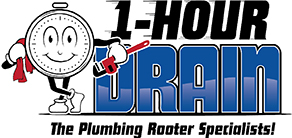In the bustling world of commercial establishments, from healthcare facilities to hospitality venues and food service establishments, the integrity of plumbing systems is paramount. Beyond functionality, commercial plumbing directly impacts public health, safety, and regulatory compliance. Adherence to health and safety regulations isn’t merely a legal obligation; it’s a cornerstone of responsible business practices. In this comprehensive exploration, we delve into the pivotal importance of adhering to health and safety regulations in commercial plumbing systems and how they uphold standards of safety, cleanliness, and accountability across various industries.
Protecting Public Health
The fundamental purpose of health and safety regulations in commercial plumbing systems is to safeguard public health. Potable water, sanitation, and wastewater management are central to preventing the spread of waterborne diseases, contaminants, and pathogens. In industries such as healthcare, where vulnerable populations rely on sterile environments, and food service, where hygiene is non-negotiable, adherence to regulations is crucial for preventing outbreaks and protecting public health.
Ensuring Regulatory Compliance
Regulatory compliance is not negotiable in commercial plumbing. Local, state, and federal regulations set standards for water quality, backflow prevention, grease trap maintenance, and wastewater disposal. Compliance ensures that businesses meet the minimum requirements for health and safety, avoiding penalties, legal liabilities, and reputational damage. Moreover, regulatory frameworks evolve, requiring businesses to stay abreast of updates and changes to maintain compliance effectively.
Upholding Standards of Safety, Cleanliness, and Accountability
Health and safety regulations in commercial plumbing systems uphold essential standards that are integral to operational excellence. They ensure that water supplies remain uncontaminated, wastewater is properly managed, and facilities adhere to best practices for cleanliness and sanitation. Beyond regulatory requirements, these standards reflect a commitment to accountability, transparency, and ethical conduct in business operations.
Key Components of Health and Safety Regulations
Health and safety regulations encompass various components that address different aspects of commercial plumbing systems:
- Water Quality Standards: Regulations establish criteria for acceptable levels of contaminants, ensuring that drinking water meets stringent quality standards and is safe for consumption.
- Backflow Prevention: Backflow prevention devices are mandated to protect potable water supplies from contamination by preventing the reverse flow of non-potable water into the system.
- Grease Trap Requirements: Food service establishments must install and maintain grease traps to capture fats, oils, and grease (FOG) to prevent sewer line blockages and environmental pollution.
- Wastewater Disposal Regulations: Regulations govern the proper disposal of wastewater and sewage to prevent pollution, environmental degradation, and public health risks.
The Importance Across Industries
The significance of health and safety regulations in commercial plumbing extends across various industries:
- Healthcare: Hospitals, clinics, and medical facilities must maintain sterile environments to prevent infections and ensure patient safety.
- Hospitality: Hotels, resorts, and lodging establishments must provide clean and hygienic accommodations for guests, adhering to standards for water quality and sanitation.
- Food Service: Restaurants, cafeterias, and food processing facilities must prioritize food safety, proper hygiene, and sanitation practices to prevent foodborne illnesses and contamination.
Challenges and Considerations
Despite their importance, businesses may encounter challenges in achieving and maintaining compliance with health and safety regulations:
- Complexity of Regulations: Health and safety regulations are complex, subject to interpretation, and may vary across jurisdictions, requiring businesses to navigate a maze of legal requirements.
- Resource Constraints: Compliance may require significant investments in infrastructure, technology, training, and ongoing maintenance, posing challenges for businesses with limited resources.
- Training and Education: Employee training is essential for ensuring awareness of health and safety protocols, proper procedures, and regulatory requirements related to plumbing systems.
- Monitoring and Enforcement: Businesses must establish systems for monitoring compliance, conducting inspections, and addressing non-compliance issues promptly to mitigate risks and maintain regulatory compliance.
Conclusion: A Commitment to Excellence
In conclusion, adherence to health and safety regulations in commercial plumbing systems is not just a regulatory requirement; it’s a commitment to excellence, responsibility, and public health. By prioritizing compliance, businesses uphold standards of safety, cleanliness, and accountability, fostering trust, loyalty, and confidence among customers, employees, and stakeholders. As stewards of public health and safety, businesses have a moral and ethical obligation to prioritize compliance and uphold the highest standards of health and safety in their operations. Together, we can create environments that are safe, healthy, and conducive to the well-being of all.



